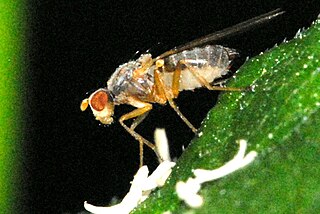
Pangio is a genus of freshwater fish in the loach family (Cobitidae). In earlier taxonomic schemes it was known as Acanthophthalmus. It is best known for the "kuhli loach", which is often kept by aquarists.

T wave alternans (TWA) is a periodic beat-to-beat variation in the amplitude or shape of the T wave in an electrocardiogram TWA was first described in 1908. At that time, only large variations could be detected. Those large TWAs were associated with increased susceptibility to lethal ventricular tachycardias.

The Encyclopedia of Life (EOL) is a free, online collaborative encyclopedia intended to document all of the 1.9 million living species known to science. It is compiled from existing databases and from contributions by experts and non-experts throughout the world. It aims to build one "infinitely expandable" page for each species, including video, sound, images, graphics, as well as text. In addition, the Encyclopedia incorporates content from the Biodiversity Heritage Library, which digitizes millions of pages of printed literature from the world's major natural history libraries. The project was initially backed by a US$50 million funding commitment, led by the MacArthur Foundation and the Sloan Foundation, who provided US$20 million and US$5 million, respectively. The additional US$25 million came from five cornerstone institutions—the Field Museum, Harvard University, the Marine Biological Laboratory, the Missouri Botanical Garden, and the Smithsonian Institution. The project was initially led by Jim Edwards and the development team by David Patterson. Today, participating institutions and individual donors continue to support EOL through financial contributions.
Brachinus alternans is a species of ground beetle in the family Carabidae. It is found in Central America and North America.

Heleomyzinae is a subfamily of flies in the family Heleomyzidae. There are about 19 genera and more than 400 described species in Heleomyzinae.
Trichalophus is a genus of broad-nosed weevils in the beetle family Curculionidae. There are more than 50 described species in Trichalophus.
Cryptocephalus alternans is a species of case-bearing leaf beetle in the family Chrysomelidae. It is found in Central America.
Stylurus spiniceps, the arrow clubtail, is a species of clubtail in the dragonfly family Gomphidae. It is found in North America.
Anorostoma is a genus of flies in the family Heleomyzidae. There are about 17 described species in Anorostoma.

Heleomyzini is a tribe of flies in the family Heleomyzidae. There are about 10 genera and more than 180 described species in Heleomyzini.
Philodes alternans is a species of ground beetle in the family Carabidae. It is found in North America.
Philodes is a genus of ground beetles in the family Carabidae. There are at least four described species in Philodes.

Lepyrus is a genus of true weevils in the beetle family Curculionidae. There are more than 70 described species in Lepyrus.
Anorostoma cinereum is a species of fly in the family Heleomyzidae.
Onychylis is a genus of marsh weevils in the beetle family Brachyceridae. There are about 12 described species in Onychylis.
Egira alternans, the alternate woodling, is a species of cutworm or dart moth in the family Noctuidae. It is found in North America.
Onychylis alternans is a species of marsh weevil in the beetle family Brachyceridae. It is found in North America.
Oligomerus alternans is a species of death-watch beetle in the family Ptinidae. It is found in North America.
Temnostoma alternans is a species of syrphid fly in the family Syrphidae.
Anisodactylus alternans is a species of ground beetle in the family Carabidae. It is found in North America.






